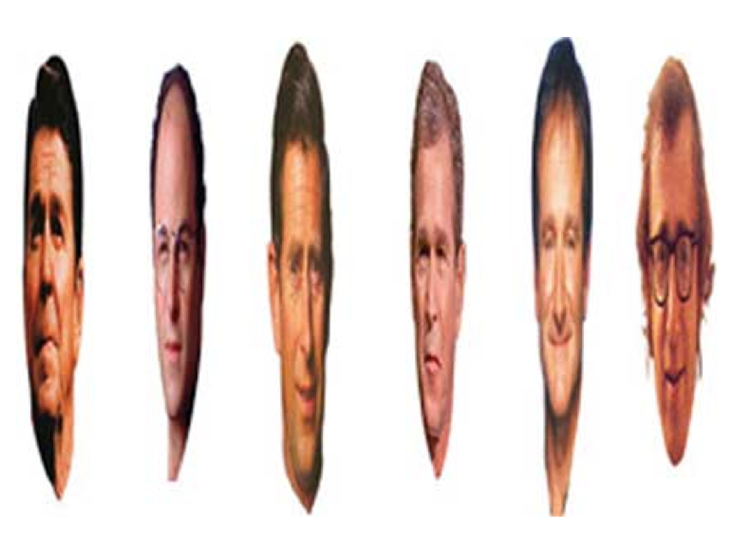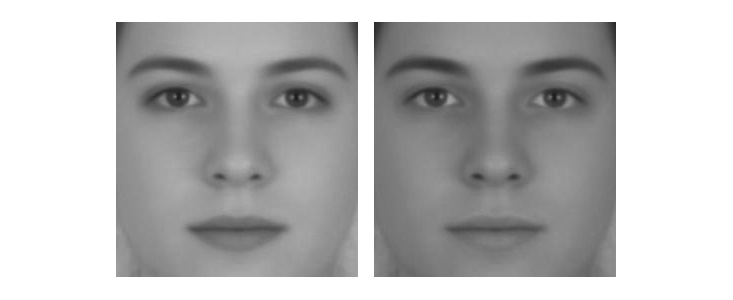Your powers of attention: fooled!
Attention is, by definition, limited. And that’s usually a good thing. If you’re searching for a lost earring on the floor, you want to ignore anything that’s not small and shiny. When talking to someone at a party, your mind helpfully tunes out all of the other voices prattling on around you.
Sometimes, though, our exquisite attentional machinery can give us a warped version of reality. For example, try to figure out the culprit in this fictional murder mystery:
The video demonstrates the psychological concept of change blindness, or the inability to notice changes (even big ones) in a visual scene. Film editors, frequently tasked with splicing together scene cuts with small differences in the background, have long known about this phenomenon. And in the last couple of decades it has become a hot topic in cognitive science.
In one experiment, published in 1997, psychologist Daniel Simons made movies of simple scenes, such as a man getting up from a chair to answer a telephone (see videos here and here). As the camera angle cuts from the chair to the phone, the actor is replaced by a different man wearing different clothes than the first. But most viewers are none the wiser.
Earlier this year, scientists from the Brigham and Women’s Hospital in Boston performed an experiment to test the observational powers of seasoned radiologists. The researchers showed them hundreds of CT scans of a human lung and asked them to look for bright white cancer nodules. This is an example of one of the scans. First question: Can you spot the cancer nodule? Take a minute to look for it.
Second question: Did you spot the gorilla? If you didn’t, don’t feel badly: Just four out of 24 radiologists noticed it. (Try looking in the top-right corner.)
This trick depends on inattentional blindness, a phenomenon demonstrated in 1999 by Simons in one of the most famous psychology experiments of all time. Participants watched a movie of a basketball game and were asked to count the number of times players wearing white passed the ball. Focused on that demanding task, most viewers didn’t notice the best part of the video: a man in a gorilla suit walking onto the court in plain view and beating his chest.
Change blindness and inattentional blindness both show that our perception depends on much more than creating a mental replica of all of the visual details of the world. Noticing and remembering every detail would be impossible, so our brains automatically try to hold onto only the most relevant information.
The best magicians take advantage of the limits of our attention. Apollo Robbins, a master pickpocket (who uses this skill to enrich himself only indirectly, by performing), can surreptitiously steal wallets and watches from people even when they know what he’s up to. He does it by using his speech, eyes, and hands to direct his victim’s attention away from his trickery—a strategy known as misdirection. In 2011, Robbins co-authored a study with Stephen Macknik and colleagues at the Barrow Neurological Institute in Phoenix. The researchers tracked participants’ eye movements while they watched a movie of Robbins making a coin disappear:
The viewers were more likely to figure out how the trick worked when Robbins used a straight hand motion, rather than a curved one, the study found. The researchers don’t fully understand why, but it might be because the curved motion misdirects the viewer more than the straight motion does. They point to other studies showing that curved lines are more likely to grab our attention—and activate neurons—than straight lines are.
Your social brain: fooled!
There are many things in the outside world that we don’t generally need to pay much attention to—tiny changes in temperature or wind speed, say. Other stimuli are so important that our brains have evolved specialized mechanisms for processing them as quickly and efficiently as possible. Social information—such as facial expressions, gender discriminations, and speech comprehension—belongs in the latter category.
Our brains seem to be pre-wired to recognize the shape of the human face—and anything that vaguely resembles it. One 1991 study found that newborn babies prefer to look at the crudely face-like shape on the left than its inverse on the right:

A high-profile monkey study in 2006 identified a small region in the brain’s temporal lobe where neurons fire strongly in response to pictures of faces, and also fire (albeit more weakly) to objects that resemble faces, such as clocks and round fruits.
We can also discriminate between individual faces when they’ve been dramatically distorted. One study showed participants this panel of blurry faces:

Participants in the study could correctly identify more than half of these famous faces. How many can you name? (See the answers below.) A similar experiment squeezed celebrity faces to 25 percent of their original width:

Viewers were just as good at recognizing these images as those that had not been compressed. (See answers below.) Both experiments show that we perceive faces holistically, rather than focusing on any particular feature.
An unfortunate side effect of that exquisite facial perception is that we’re frequently fooled into face pareidolia, the tendency to perceive something meaningful in an ambiguous stimulus. This phenomenon explains why, in 2004, a 10-year-old grilled cheese sandwich sold in an eBay auction for $28,000: Emerging from the crusty crags and nooks, the buyer must have believed, is the face of the Virgin Mary.

We see faces all over the place, not only in grilled cheese sandwiches, but in water-stained plaster, rusty gaskets, slippers, and, famously, the surface of the moon.
One of the most basic and informative aspects of social perception is judging whether someone is male or female. In 2009, Harvard psychologist Richard Russell published an experiment in which he showed volunteers pictures of the same face that varied only in the level of visual contrast of the eyes and lips compared with the rest of the face. It turns out that faces with more contrast look more female than do faces with less contrast:

Russell’s study also found that makeup tends to increase the visual contrast in the face. The illusion of makeup works to make women more attractive, he theorizes, because it makes a face look more feminine.
(Humans can also pull out gender cues from body movements. Subtly changing the placement of the dots in this simple animation influences whether you perceive the walking figure as male or female.)
Social interactions depend not only on quick, unconscious physical judgments, but on smooth communication through speech. Understanding what someone is saying requires the integration of many types of information: body language, facial expressions, speech sounds, and lip movements. But if these inputs give contrasting information, it can lead to some weird stuff.
Consider a 1976 study by Scottish psychologists Harry McGurk and John MacDonald. They showed volunteers movies of a woman’s mouth forming the shape of the sound “ga” paired with a dubbed sound of “ba.” The volunteers reported hearing “da”, showing for the first time that visual inputs strongly affect speech perception. This so-called McGurk effect has since been repeated in many experiments. Even when people know about it, as you do now, it doesn’t go away. See for yourself:
In 2011, cognitive scientist Matthew Thompson debuted a dramatic and disturbing face illusion consisting of pairs of faces flashing on a screen. Nothing strange happens if you just look at each face individually. But if you fixate on a center point between the two faces, both suddenly become grossly deformed as their features are exaggerated. The researchers dubbed the phenomenon the flashed face distortion effect and, for now, have no idea why it happens. A version with celebrity faces went viral on YouTube:
Your visual system: fooled!
Some misperceptions come not from higher-order areas of the brain, but the simple mechanics of our eyes. If you stare at the center green dot in this animation, it will seem like the other dots are disappearing and reappearing.

This is called motion-induced blindness. When it was was first reported in 2001, the researchers suggested that it came from the brain’s attention circuits. They proposed that there’s a “winner-take-all mode” when your attention shifts from one visual phenomenon (the rotating blue square) to another (the static triangle of yellow dots). But a newer study on this illusion throws the blame on the eyes. These researchers argue that our perceptual system essentially interprets the unmoving dot as a scotoma (a visual blemish caused by some kind of eye damage), and thus “expunges it from awareness.”
In 1981, Israeli artist Isia Leviant made a painting called The Enigma (fair warning: it might make you feel like you’re moving more than you’d really like to be):

Most people perceive an illusion of flowing motion inside of the purple circles. For nearly two centuries scientists had wondered why these kinds of repetitive patterns lead to the perception of motion, even after Leviant’s painting helped make the illusion famous.
Many researchers had thought that the effect originated in the brain. But in 2008, Stephen Macknik’s team (the same researchers who would later conduct the study on the disappearing coin) discovered that it actually comes from flickers of our eyes. When your eyes are fixated, about twice a second they make movements called microsaccades that are too small to be noticed; the eye moves at most a third of a degree. In the study the researchers used eye-tracking equipment to measure these flickers as participants looked at The Enigma. When the volunteers perceived the flow of the movement speeding up, their microsaccade rate increased; when the perceived movement slowed, so did the flicker rate.
Answers to the blurry faces challenge: 1. Michael Jordan 2. Woody Allen 3. Goldie Hawn 4. Bill Clinton 5. Tom Hanks 6. Saddam Hussein 7. Elvis Presley 8. Jay Leno 9. Dustin Hoffman 10. Prince Charles 11. Cher 12. Richard Nixon
Answers to the compressed faces challenge (from left to right): Ronald Reagan, Jason Alexander, Prince Charles, George W. Bush, Robin Williams, Woody Allen.
Virginia Hughes is a science journalist specializing in neuroscience, genetics, and medicine.






























